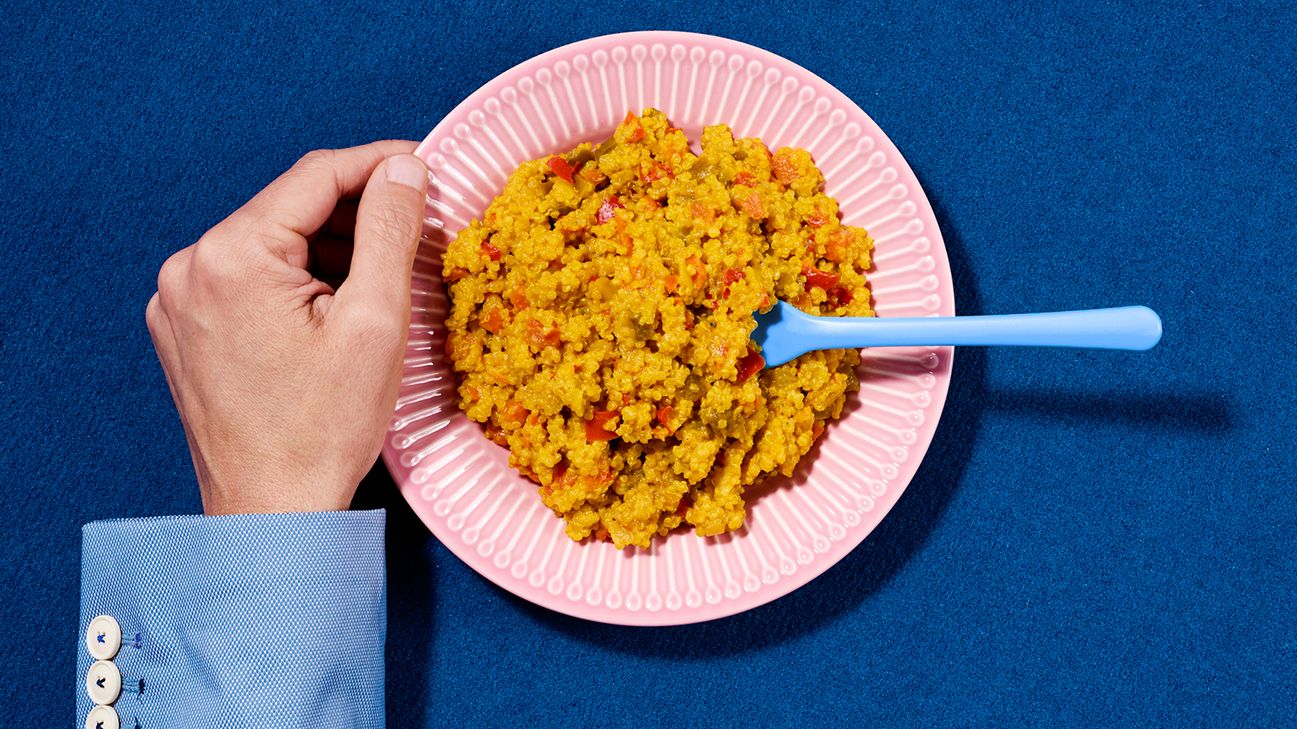It’s a tiny seed that fits on top of a pin and looks more like birdseed than a healthy dinner, but this ancient staple is no Plain Jane — it’s a protein-packed food. With a mild, nutty flavor and a texture similar to that of couscous or rice, quinoa (“KEEN-wah”) is a versatile food to include on your shopping list.
The quinoa seed packs dense protein content that leafy greens lack — and this unique nutritional makeup is what makes it so special.
Read on to find out about some of the keen health benefits quinoa has to offer.

First and foremost, quinoa is one of the few grains or seeds to provide all nine — count ’em, nine! — essential amino acids that your body can’t produce.
Amino acids are known as the building blocks of protein, so compared to other grains, quinoa provides a mighty protein fortress. One cup of cooked quinoa (try saying that five times fast) has 8 grams of quality protein, so it’s a healthy meat alternative for vegetarians and vegans.
Quinoa is most noted for containing a high amount of lysine, the amino acid most directly responsible for tissue growth and repair.
Antioxidants are substances that help prevent or slow down damage to your cells. Among the antioxidants that quinoa boasts are quercetin and kaempferol, which are known to have anti-inflammatory properties.
Studies suggest that quinoa is an excellent source of these natural antioxidants and may be a more beneficial source of them than other grains, such as durum wheat.
Iron is essential for creating the red blood cell proteins that carry oxygen from your lungs to your muscles and the rest of your body.
If you don’t get enough of this important mineral, you could develop iron deficiency anemia, a condition with symptoms such as fatigue and weakness.
After all, iron is the reason Popeye is strong to the finish, ’cause he eats his spinach. But if he ever gets sick of the green stuff, he really should consider quinoa.
One cup of cooked quinoa has 2.8 milligrams of iron, which is 15 percent of the recommended Daily Value (DV). True, a cup of cooked spinach may contain more iron (6.4 milligrams), but doesn’t Popeye deserve a break once in a while from that dietary rut? Better yet, combine them into a super spinach-quinoa bowl.
In addition to making you poop regularly, fiber has other important benefits, such as helping to keep your heart healthy and reducing the risk of diseases like certain types of cancer and type 2 diabetes.
Yet the vast majority of Americans — 95 percent of adults and children — aren’t getting enough of it in their diets, according to surveys.
One tasty way to add fiber to your diet is by eating (yep, you guessed it) quinoa. A cup of cooked quinoa has almost 5 grams of fiber, which can definitely help you fiber up a meal. Consider adding some to your pancakes, smoothie bowls, soups, salads, and pasta dishes to boost their fiber power.
Magnesium really is magnificent. This mineral helps keep your muscles and nerves working as they should and regulates your blood pressure, among other benefits.
A lack of magnesium may contribute to serious health problems like type 2 diabetes and cardiovascular disease. Unfortunately, only about half of Americans are getting the daily recommended amount of this vital mineral.
But never fear! Yet again, quinoa can come to the rescue. One cooked cup contains 30 percent of the DV of magnesium. Just be aware that quinoa, like other plant seeds, also contains phytic acid, a substance that can reduce your absorption of magnesium and other minerals.
No worries, though: To make sure you’re getting as much magnesium as you can, soak quinoa before cooking it to help lower the amount of phytic acid.
If you and your doc think you need to reduce your gluten intake, but you love those grains, look no further than quinoa as a wheat alternative.
A small 2014 study of 19 people with celiac disease found that they had minimal digestive side effects, like bloating or diarrhea, when they ate 1.8 ounces (50 grams) of quinoa every day for 6 weeks.
Another big plus is that unlike some other gluten-free foods such as rice, corn, and potato flour, quinoa flour contains no refined starches. But it does contain plenty of nutrients and antioxidants.
Quinoa comes in three types — white, red, and black, all of which are extremely versatile and can be used in a variety of dishes. Here’s how to prepare it:
- Rinse the seeds to remove their naturally occurring coating of saponin, a bitter compound that protects the plant from birds and other animals. Most commercial quinoa is prewashed, but a quick rinse at home will get rid of any excess bitterness.
- Soak the quinoa to help remove the phytic acid. In a large bowl or pot, combine the quinoa with 2 cups of lukewarm water for each cup of quinoa. Let it soak for at least 2 hours (or, better yet, overnight), and then drain it and rinse it again.
- The most basic preparation method is to cook quinoa like rice. Combine 1 part quinoa with 2 parts water in a pot and bring to a boil over high heat. Then reduce the heat to low, cover, and simmer for 15–20 minutes.
Feeling inventive? Here are some peachy-keen ideas for using quinoa.

